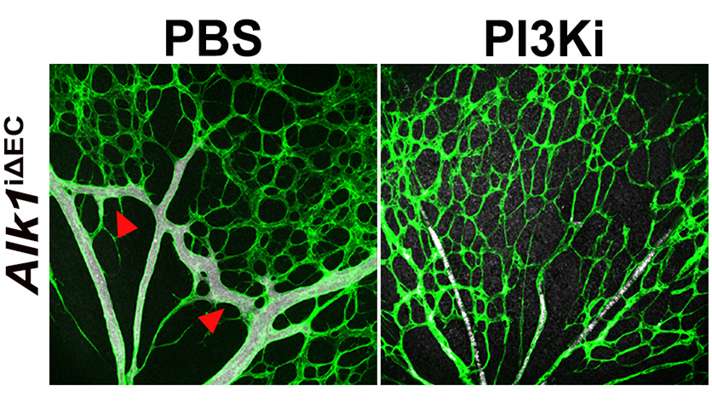Study points to possible treatment for a rare vascular disease

In individuals with a rare genetic disorder that affects blood vessels, arteries and veins develop abnormal connections, causing bleeding in the skin, nose, and other organs. In most cases, the condition—hereditary hemorraghic telangiectasia, or HHT—is due to mutations in two genes that regulate proteins in the endothelial cells lining the blood vessels. Treatment options are limited.
To better understand the disease mechanism, professor of cardiology Anne Eichmann and her co-authors studied the condition in mouse models. They found that deleting the genes in the animals led to vascular malformations similar to those seen in HHT patients.
Next, by using a drug to inhibit a protein involved in cell growth (P13 kinase), the researchers reversed the condition in mice. If the finding is confirmed in human patients, it could lead to improved treatment for the disease, say the researchers.
More information: Roxana Ola et al. PI3 kinase inhibition improves vascular malformations in mouse models of hereditary haemorrhagic telangiectasia, Nature Communications (2016). DOI: 10.1038/ncomms13650


















